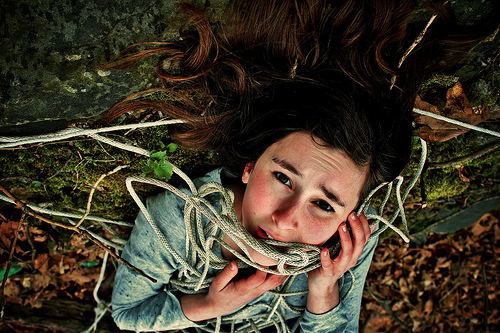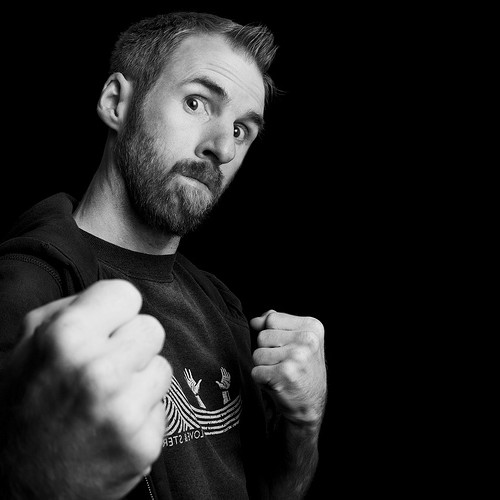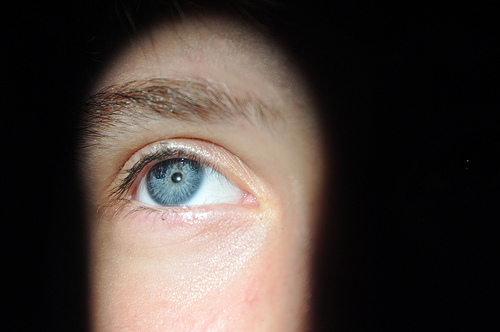The Valuable Lessons Conflict Teaches Us
As we wrap up our look at the third corner pillar of novel construction—conflict with high stakes—I’d like to make a few other observations about conflict. I spoke a bit about inner and outer conflict last week (if you’ve missed any of the posts on this topic, start here), and how the best novels have both types of conflict in great measure, and in various strengths involving as many characters and situations as possible. Messier is better when it comes to conflict, and we have to resist the tendency to be nice to our hero or heroine.
Must You Have Both Inner and Outer Conflict?
It’s possible to have a strong novel with just inner conflict and little external conflict. You could have a story that follows the classic “man against nature” scenario in which a character is shipwrecked on an island and never sees another soul. I think of the movie Castaway, which might have started out as a “man against nature” story. But at some point the protagonist masters nature. He learns to fish and finds a way to survive without too much effort or challenge. Then what’s the story really about? Where’s the conflict?
In a case like this, the central conflict element of the story just might be about a character trying to keep from losing hope. Or you could be writing a novel about a person in solitary confinement for ten years. If done well, it could be terrifically tense and gripping even if nothing “goes on” outside the character’s mind. But these are unique premises that perhaps create a situation in which the external conflict is minimal. Most novels really need both inner and outer conflict.
A novel with just exterior conflict and no inner conflict, in my opinion, will fail. Stories are about characters, and characters must change in the story or you don’t have a story. What causes change in us is inner conflict. Until something you believe or think is challenged, you will not change your views, opinions, attitudes, behavior, core beliefs. And a character who never changes is boring.
I will also be so bold as to say this: if the inner conflict is way bigger than the outer conflict, it will act as an amplifier to the outer conflict and make it much more significant. For example, you could have a suspense thriller with a killer plot that has great twists and tense action (James Bond movies, for example). But if you add to the mix a protagonist with huge inner conflict, someone who is fighting with himself, his past, or his inner demons, you will have a much stronger and more compelling story.
As I mentioned in an earlier post, we want to resonate with the characters in a novel. The best way to create resonance is to show vulnerability. How do you show vulnerability? Make your characters conflicted.
Which brings me to something I’ve been thinking about while writing these posts on conflict.
Life without Conflict Is Like . . .
Think for a moment what life would look like without conflict. If you could go through every day without any opposition. Without anyone (or yourself) challenging what you feel or believe. Without anything in your way as you put out the effort to reach your goals and accomplish your dreams. No competition, no one to question you or your motives and actions. No conflict.
Sounds great, right? Paradise, heaven, perfection. We say we love conflict in the stories we read because that is what real life is like, but what if real life wasn’t like that? What would we miss out on?
Hmmm . . . some of you may be shaking your heads and saying, “Miss out on? What the heck?”
The Refining Process of Precious Metals
My pastor gave a talk once on refining silver, since the Bible talks a bit about faith and how it has to be tested and refined to be of any value. In fact, the Bible likens refined faith to silver and gold, precious metals of high value. He spoke about how when silver is heated to extreme temperatures, the impurities or dross rises to the top of the molten metal so it can be skimmed off. That’s how the metal can be purified, improved, made more valuable. Likewise, the trials we go through in life are a crucible that provides a way for us to face the “ugly” dross within us and get it to the surface so we can skim it off and become better people.
Maybe some would argue that trials, tests . . . conflict . . . only aggravate and burden our lives with pain and grief. And that is certainly true. No one in their right mind wants to suffer or struggle with conflict. But thinking along those scriptural lines, we might look at the upside of trials.
Conflict makes us face our flaws and weaknesses. It reveals to us hidden things about ourselves, often painful things (perhaps from past hurts), and often gets to the core of our motivation, showing why we do the things we do. Conflict makes us reconsider our values, ethics, morals, decisions, attitudes. The higher the stakes we might face in a situation, the more at risk and the more we have to lose, the more we have to look honestly at ourselves and what we want, need, and desire. We cannot grow or change for the better without some of this honest assessment, because change on a significant scale has to be deliberate.
Conflict Is Good for Us
If we’re honest (and brave), we might just say we need conflict. Conflict is good for us. Conflict is essential to healthy emotional growth. Conflict is life. And we want the characters in our novels to be real and believable. For them to grow, change, and learn, they need to be thrown into a crucible. They need the fire of conflict to bring that dross to the surface. Whether they will learn from the trials they go through is up to you, the author. But if you don’t throw them in the fiery furnace, the reader won’t get to see their flaws and weaknesses and desperation rise to the surface.
I like to think that the fire of tribulation also brings out the true essence of character (even if only a glimpse), and that is a valuable consequence as well. If a character can have a moment in your novel in which he sees himself as he truly is, that is usually a pivotal moment. What he does when he “looks in the mirror” is, again, up to you, the writer. In most great novels, that moment comes right before or at the climax, and it acts as a huge motivational thrust to push the character to make the big final decision/action that brings the story to a conclusion. In other words, the biggest challenge/trial/conflict reveals the biggest truths to the character, forcing him to face the hardest facts about himself (also referred to by some as the “dark night of the soul” moment).
So I hope all these posts on conflict and stakes have given you a lot to consider as you structure your novel (or restructure it). Conflict, inner and outer, is a key pillar to a great story. And the conflict must have stakes—high stakes, and if possible, public and personal stakes. Don’t be afraid to put all your characters in the crucible of fiery trials. It will bring out all the ugly, awful hidden things that reveal the core of motivation for both your good guys and your bad guys.
Next week, we’ll start in on our fourth corner pillar of novel construction: theme with heart. This one is my favorite (I wrote an entire year-long course on writing the heart of your story), and is probably the most often neglected and ignored component of novel writing.
And now, I know you’ve been waiting for this third inspection checklist, so here it is (below): twelve sets of questions to help you examine the conflict with high stakes in your novel. If you can answer these questions to your satisfaction, and see that you have the central conflict element clearly defined and the stakes as high and as wide-reaching as possible, you will have a strong support pillar that will not crumble under the weight of your story. Happy building!
Got any thoughts on this discussion of conflict? Have you honed the conflict and stakes in your novel? Want to share some thoughts about them?
Inspection checklists:
Inspection Checklist 1-concept with a kicker
Inspection Checklist 2-protagonist with a goal
Inspection Checklist 3-conflict with high stakes
Photo Credit: martinak15 via Compfight cc












Thanks for this excellent post – it’s really helped me crystallise how to approach the ending of my novel. There’s plenty of conflict (both internal and external) throughout, but the first draft of the ending is flat and disappointing. The protagonist learns about himself, but the conflict and tension are suddenly absent. This post has given me a whole new take on how it should play out and how to keep that tension alive in the reader’s mind, even after the end of the story. Thank you!
The internal and external conflict formula really is used to good effect by some of today’s best mystery writers, such as Jo Nesbo and Ian Rankin. Their characters struggle with personal relationships, ethics, and alcoholism and drug use. Maybe few are as self-destructive (and still alive!) as Nesbo’s Harry Hole but internal conflict is what makes readers relate to these characters.
I write a mystery series as well, but didn’t want to have the main character be yet another boozy cop. Instead, she’s the first female police detective in Acapulco, a scenario giving plenty of scope for conflict with male colleagues, an uncertain relationship with a gringo boyfriend, and a difficult family situation. These internal conflict elements affect how she handles the external conflicts–drug violence, murder, kidnappings, money laundering–inherent in being a cop in one of the world’s most violent cities.
My characters have plenty of inner conflict…oh yes, they’re tortured souls. But I fall flat with the outer conflict. Actually,where I fall flat is in determining what the character WANTS. Once I nail that, then I can throw someone or something in the way.
That said, I often have a sense of conflict as I write; I just can’t put my finger on what the specific conflict it. When I try to put it into words I fall flat. I’m a pantser, which is part of the problem.
Great post!
Your emphasis on the pivotal moment is exceedingly helpful. Often the flow of my work is intuitive, but then when rewriting and reorganizing text, your comments are so valuable. Thanks.
Fantastic article. The alchemists used turning base metals into gold as a way to gain immortality. As you write so elegantly and concisely, inner and outer conflict is the key to write a book that is read forever!
As a Process oriented therapist, my writing has a greater emphasis on the inner. You have reminded me that I need to work on more outer conflict, which is part of the love story and where the story is based. However I think I need to ‘raise the stakes’ more!